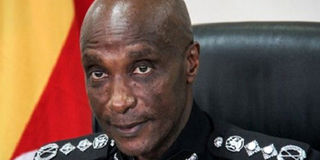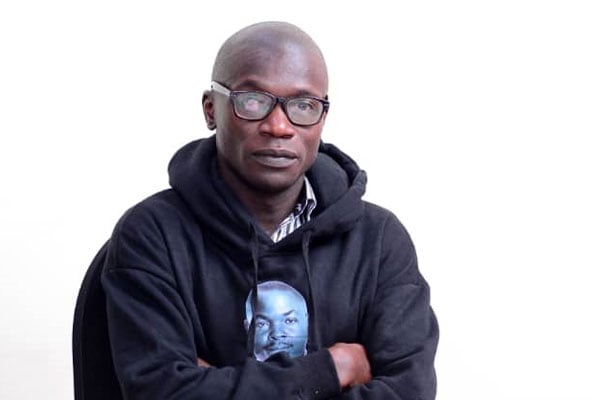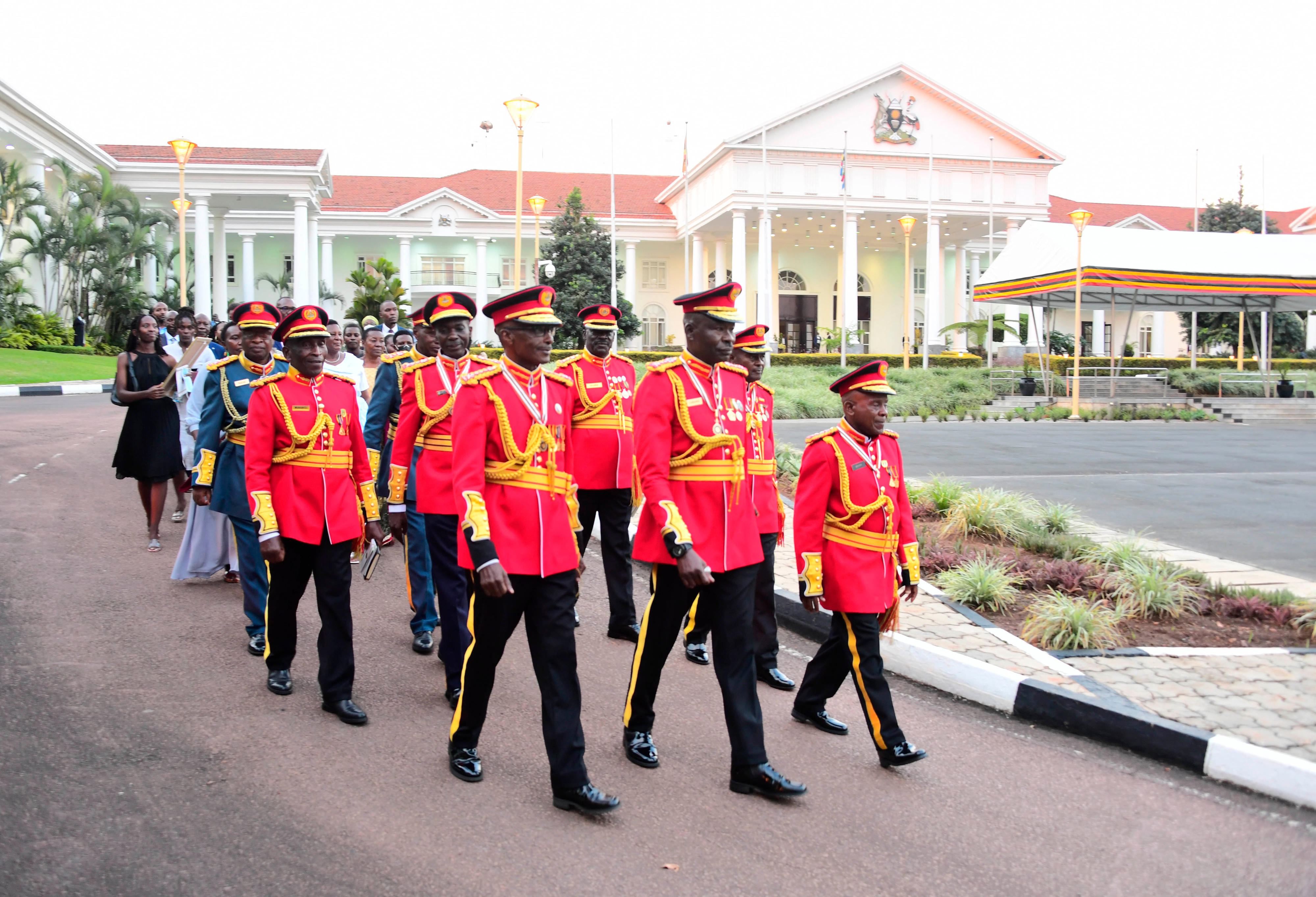Prime
How Kayihura militias terrorised Opposition

Former Inspector General of Police (IGP), Gen Kale Kayihura.
What you need to know:
- In the fifth instalment of The Kale Files, Derrick Kiyonga and Isaac Mufumba chart and lay out how Gen Kale Kayihura came to be the power behind the throne of illegal paramilitary groups that were intent on sowing seeds of fear in the Opposition.
On June 9, 2009, the crème de la crème of the Uganda People’s Defence Forces (UPDF) and the ruling National Resistance Movement (NRM) converged in Luweero for celebrations to mark Heroes Day. One person who was conspicuously missing was the Inspector General of Police (IGP), Gen Kale Kayihura.
As it turned out, Gen Kayihura was on the same day meeting members of the infamous Kiboko Squad at the former Clock Tower grounds. The paramilitary group first came to the scene in 2007 when riots broke out over President Museveni’s proposal to give part of Mabira Forest to the Mehta Group for sugar cane production.
Retired former Deputy IGP Julius Odwe says this amounted to an official launch of the squad and an endorsement of its activities. The function set the stage for a confrontation between the superior and his immediate deputy.
“I put it to him that the Kiboko Squad would give a very bad image to the police. I advised him to stop promoting such illicit acts as the police does not have a legal basis for deploying such squads,” Mr Odwe told the Monitor.
Kayihura, a four-star general, was, however, unmoved. He seemed to have chosen a machiavellian approach to his policing work. Put simply, the end justified the means.
A look at his nearly 13-year tenure as IGP reveals that Gen Kayihura prided in training vigilantes and making them cornerstones in a “new” community policing strategy. The strategy was presented as a key cog in fighting terrorism and crime. The Opposition thought otherwise.
Three people died and many others were injured after the police used live ammunition to quell the Mabira riots in April 2007. Some of the leaders of the demonstration, including then Kitgum Woman MP, Ms Beatrice Anywar, alias Maama Mabira; Makindye West lawmaker Hussein Kyanjo (RIP); then vice president of the Uganda Young Democrats (UYD), Mr Mukasa Mbidde; and Mr Issa Sekitto, then chairman of Kampala City Traders Association, were arrested and charged in connection with the demonstrations.
Kiboko in action
When the demonstrators stormed the streets, they were met by a group of civilian-clothed youth. The vigilantes were armed with big sticks and would soon be christened the Kiboko Squad.
The most shocking part was that the vigilantes emerged from the Central Police Station (CPS), arguably the busiest police station in Kampala. The police neither owned up to nor condemned the vigilantes.
An Asian was killed during the riots. When President Museveni met the Asian community, he praised the vigilantes for reining in hooliganism sparked by what he termed as political opportunists.
Riots were not new to Gen Kayihura. The controversial sale of Kampala markets to businessmen who had connections with NRM had triggered a number of uprisings. One of the controversial sales involved Col Clovis Mugyenyi’s Rhino Investments acquiring Kisekka Market.
In 2009, Kisekka Market traders stormed the streets of Kampala protesting this sale. Awaiting them was the Kiboko Squad. Gen Kayihura was quick to blame Kampala Lord Mayor Erias Lukwago for instigating the riots.
Who were they?
Sources within security said Kiboko Squad members were recruited from various places, including the police. Most of them, though, had been shaped by the hard knock life. There were rumours that some of them were part of the Black Mamba paramilitary squad that invaded the High Court in 2006 after Dr Kizza Besigye was preparing to post bail following terrorism and treason charges.

Then Inspector General of Police Gen Kale Kayihura (centre) inspects a parade mounted by Crime Preventers in Mbarara District in 2015. Photos | File
Juma Semakula, who claimed to be the leader of the Kiboko Squad, told the media that his team of rogues were part of the police’s Usalama project. Launched by Gen Kayihura in Kawempe on March 14, 2007, the project was intended to help police in crowd control. It initially took 300 people under its wing. An investigation that was carried out by this newspaper at that time established that each division of the city was supposed to recruit about 300 people to feed into the project.
Sources within security, who didn’t want to be named so that they could speak freely, said the police used Kiboko squads because demonstrators had learnt to push back on the Force’s deployment of teargas.
Police officers, on condition of anonymity, said demonstrators would not only sport polythene bags around their faces to shield off the irritating gas but also go armed with water containers. But sticks, the police officers said, would inflict direct pain on the rioters because they have no gadgets to shield themselves as they would teargas.
A facade?
Another theory was that if you peeled off the Kiboko Squad’s mask, you would be met with the police. It was further alleged that if the State used regular security forces such as the police and the army in uniform, its standing internationally would be damaged. Possibly, irreparably.
Soon the Kiboko Squad was bold enough to start targeting Opposition politicians with violence. On June 9, 2010, the vigilantes laid siege to Dr Besigye and other like-minded people as they attempted to march to CPS. On June 15, 2010, Kirunda Kivejinja (RIP), then Interior minister , disowned them. He told Parliament that the government had commissioned an investigation “to establish the identity, membership, leadership and mission of this group.”
Stone throwers
Yet stone-throwing vigilantes would soon be added to Gen Kayihura’s community policing strategy. In 2013, in an effort to show presence, the Opposition led by Dr Besigye tried to put together a string of rallies. Vigilantes armed with stones had other ideas. In March 2013, Dr Besigye and Lord Mayor Lukwago organised a rally in Kawempe Division at a place popularly known as Ku Taano.
As Lord Mayor, Mr Lukwago had called for the rally to “address the problems of Kampala.” The vigilantes, however, pelted Dr Besigye and Mr Lukwago with stones. The trail of destruction they left included smashed car windows and a destroyed public address system. The police, who witnessed the fracas as it unfolded, distanced themselves from the group that the Opposition insisted were in cahoots with them.

Members of the Kiboko Squad wait to catch their prey demonstrating at Clock Tower on June 9, 2010.
It later emerged that the stone-throwers were members of a well-coordinated group that first operated in the area as a community-based organisation. They first registered as Voice of the Youth before evolving into Voice of Movement Youth (VOMYO) at the height of the 2011 elections. It was during these elections that Gen Kayihura started assembling youth who were going through military training commonly known in Swahili as Mchakamchaka.
Boda Boda 2010
Then along the way came the Boda Boda 2010 group led by the NRM chairperson of Lubaga Division, Mr Abdallah Kitatta. Composed of motorcycle taxi drivers, the group sprung into existence in the run-up to the 2011 General Election. It was the product of the NRM’s obsession with winning Kampala.
Over the months, the group became too powerful. It manned the boda boda industry in Kampala, was pivotal in storming the Makindye Court when Gen Kayihura was sued for brutality and also stood by him during his run-ins with Gen Henry Tumukunde (who at the time held the security docket).
The group, however, came up for intense scrutiny in October 2017 when it descended on and beat 27 pupils, a teacher and a guard of Winterland Primary School. Plain-clothed police officers, who were escorting the contingent to Nkumba University to participate in festivities marking that year’s annual police week, were also not spared.
Mr Muwanga Kivumbi, the shadow Internal Affairs minister then, said Boda Boda 2010 was directly under Gen Kayihura, an assertion that Mr Asan Kasingye, the Force’s spokesperson at the time, denied. The arrest of Kitatta and several other members of the group in January of 2018, as well as the discovery of weapons and army uniforms in his home, put to bed those denials.
Crime preventers
As the 2016 elections neared, Gen Kayihura increased the tempo by spearheading the training of what he said were 11 million Crime Preventers.
Intelligence reports would go on to show that this was not just about fighting crime. Gen Kayihura was also allegedly consolidating power. The resources available to him created an impression that if not gripped in the sprout, the President was risking tackling him too little too late.
Those who know the General roundly dismissed this notion. They insist that in creating the so-called Crime Preventers, the former police chief was being creative in stopping the unemployed youth from joining Opposition protests such as the defiance campaign championed by Dr Besigye.
“While media frequently framed Crime Preventers as a political militia, State actors ultimately formed and maintained the programme by alternately and interchangeably deploying multiple justifications for their existence,” researcher Rebecca Tapscott wrote in her paper titled Whither the State? Surveillance, Crime Preventers, and Potential State.
She added: “[The] presence of contradictory narratives made Crime Preventers difficult to discern—both for society and for crime preventers themselves. Many youth joined the programme because they believed the 2016 elections would return the regime to power, and that supporting this result would give them access to regime patronage. Their calculation seemed conservative—for decades, the NRM has controlled distribution of resources and economic opportunities.”
In the next instalment of The Kale Files, we will take a deep dive into Gen Kayihura’s handover report and hazard guesses as to what the future holds for the four-star general.





